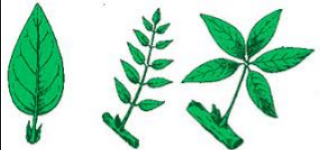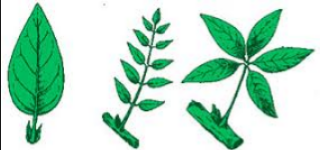Leafs or leaves what is the difference?
The correct way to spell the plural of 'leaf' is 'leaves', if you are talking about the definition of leaf as a noun.
Leaves is the grammatically correct way to spell the plural word of the noun leaf
We can use leafs, only if we add the apostrophe which indicates possession as 'leaf's'. That is, something belongs to the leaf, however, grammatically speaking the correct way to spell it is leaves, if you are referring to there being more than one leaf. This is because many nouns that end in "f", most of the time have "ves" changed and added towards the end, replacing the "f" ending.
There are however some instances where "leafs" is used when "leaf" is used as a verb (the act of flipping a page). Even though, it is not commonly used, it is still worth noting that in this case it would be appropriate to use to indicate that "she/he leafs through the book".
Examples of how to use the plural tense 'leaves' as a noun:
Fall has just begun, you can see all the leaves change color
It is such a hassle having to pick up all of the leaves on my porch every morning.
The plural tense of "leaf" should be pronounced as "leaves"
However, even though it is grammatically incorrect sometimes we also tend to pronounce it as "leafs", but it should always be spelled out as "leaves".


The plural of the word “leaf” is “leaves.” The NHL team in Toronto is properly the “Maple Leafs.” I suppose what they’re telling us is that they’re multiple avatars of the Maple Leaf symbol, not a bushel of leaves of the botanical variety. My online dictionary gives “leafs” as an acceptable secondary spelling, but I don’t buy it.
What is the plural of the leaf? Is it leaves or leaves?
“Leaf” is the singular form for the foliage that is growing off the twig in a tree, bush, and other plants. The plural of “leaf” is “leaves.” There is no such form as leafs; however, by using an apostrophe, you will the singular possessive form for “leaf.”
singular - - — - - - - - - - - - - -leaf Ex: That leaf is tuning brown.
plural - - - - - - - - - - - - - - - - -leaves Ex: The leaves on the tree are covered with snow.
singular possessive - - - - - - leaf’s Ex: That leaf’s stem is curling a bit.
plural possessive - - - - - - - - leaves’ Ex: Those leaves’ stems are curling somewhat.
Why we use leaves as plural of leaf?
Answers: We use leaves as plural of leaf, because there is a rule in English grammar that several nouns ending in - f or - fe form their plural by changing -for - fe into ‘v’ and adding - es; as,
Leaf, leaves / thief, thieves / wife, wives / wolf, wolves / shelf, shelves /knife, knives / calf, calve / life, lives / loaf, loaves.
Why is plural form of leaf (leaves)?
"What is the plural of leaf? Is it leafs or leaves?"
Wow! Seventy people have already answered this question! Well, I've skimmed through quite a lot of the answers and I think maybe I can actually add something to the conversation. Let's see...
As many have already explained, when you are referring to a "leaf" that grows on a plant, the plural is "leaves" (just as many other nouns that end with "f" change the "f" to "v" and add "es.")
Now that we have that obvious answer out of the way, lets think about other uses of "leaf/leaves." The thing is, we don’t always use “leaf” as a noun.
Leafs vs. Leaves!
Pronunciation
This issue is both a pronunciation and a grammar issue.
Leaves has a 'v' sound which is just the voiced version of 'f.'
Grammar
The grammar is interesting here. Most of the time somebody says 'leafs' they're using it incorrectly.
Leaves is both the plural of the word 'leaf' as well as a form of the verb 'to leave.'
An interesting note is that 'to leaf' is also a verb. It means to quickly look through many pages or different papers. One of the forms of this verb is also 'leafs.'
Example Time!
1) The leaves are falling from the tree
2) Dad leaves for work at 7:00 in the morning.
3) She leafs through the pages of the book to get an idea of what it's about.
In conclusion
If you forget the rules, it's probably always 'leaves.' We don't use the word 'leafs' very often.
The difference between Leafs and leaves.
Leaves
As a noun, a leaf is a small, green and flat part of a plant that grows directly from a branch, trunk or root. It is the main organ of photosynthesis and transpiration. Its plural is leaves.
Leafs
As a verb, leaf is to put out new leaves. It may also mean to turn over the pages of a book or the papers in a pile, reading them quickly or casually.
Examples in sentences of both the leafs and leaves
1. He begged to leave after plucking several leaves.
He leafs through a stack of notes.
It leafs immediately it rains.
Conclusion
It is therefore obvious that leafs is a verb of which the 's' used can only be included when talking about pronouns in third person singular form, that is he, she, it or a single name.
Leaves is the plural form of the noun leaf and as such, their usage are different as shown in the above examples.
Leaf and leaves
This is a spelling rule for nouns in English
If the noun ends in an - f or -fe, in the plural it changes to -ves
Singular - F
Plural - VES
1 leaf 2 leaves
Other examples which behave similarly
1 wife - 2 wives
1 wolf - 2 wolves
1 knife - 2 knives
1 life - 2 lives
1 loaf of bread - 2 loaves of bread
Exceptions to the rule
1 roof - 2 roofs
I have a big house, it has 2 roofs.
1 chief - 2 chiefs
There are 2 chiefs in the village
1 chef - 2 chefs
There are 2 chefs in this kitchen
Some nouns can take both endings - both are correct
I scarf - 2 scarfs or 2 scarves
She was wearing 2 scarfs/ scarves because it was so cold
Remember your verb - noun agreement
This knife is sharp
These knives are sharp
This loaf of bread is fresh
These loaves are not fresh
The difference between leafs and leave
Leaf as a noun refers to the wide, narrow, big or small green parts of a plant or a tree, that usually falls down in autumn (fall).
Example:
This tree is very big, it has so many levels, so it makes big shadow.
Plural of leaf is leaves, never leafs.
However, it can refer to a verb as well.
When we use leaf as a verb it refers to the growth of the leaves on a plant.
Example:
It is springtime. Many trees start to leaf and blossom.
Leaf as a verb can also mean to turn over pages in a book. So if we use the verb for the third person singular (he, she, it) in Present Simple, then the form will be leafs.
Marry leafs the pages of the book so fast, to show her method of skimming and scaning a book.
I will make it poetic
So the meanings of these two you can easily pick
One day ONE LEAF fell on my feet
I looked up at the tree
and stared at the green LEAVES in glee
I call it Leaves instead of leafs
For it's the plural of one leaf I see,
You may wonder why not leafs
Coz of the rules of English that you believe
That's because Leafs in the dictionary does not exist
So Leafs instead of Leaves we should not insist.
-Teacher Love-
.....................................................................
.....................................................................
.....................................................................


What is the difference between leafs and leaves?
Leaf functions as a noun. As a noun, the leaf is the small, green and flat part of a plant that grows from a branch, trunk or root.
The plural form of leaf is leaves.
Leafs is not a plural form of leaf
Example:
I saw a caterpillar eating a leaf on a tree.
In Autumn the wind blows and the leaves fall off the tree.
Did you know that leave is used as a verb, but leaves is used as a noun?
Please do not confuse these words:
Leaf - Singular Noun
The caterpillar ate an entire leaf.
Leaves - Plural Noun
I saw the leaves fall off the tree.
Leave - Present tense Verb
Please leave the classroom immediately.
While these words look similar, they have different meanings and can be used in different ways. It is important to learn the differences as the similarity can be confusing.
Leafs
Leafs is a verb, which is an action word.
It has two meanings.
When a plant or flower leafs, this means it is putting out new leaves.
When someone leafs through a book, it means they are turning the pages quickly.
Leaves
Leaves is a noun, which is an object word.
Leaves are parts of a plant.
But there is an additional meaning to leaves.
A more advanced meaning of leaves is when someone goes away in third person present tense, for example "John leaves to France tomorrow"
Examples.
Harry leafs through his book trying to find the right page.
My carrot plant leafs in July, when it is ready for harvest.
Look at all these leaves on the floor, the season must be changing.
Susan leaves to the airport in one hour.
Remember
Learn the differences so you do not get mixed up!
Leaf can be used as a noun or verb which means there are different plural and singular forms of these words depending on whether you use the noun or verb.
Definitions and rules:
Leaf as a noun is the green organ borne by trees and plants. There are other definitions of this word but this is the most common one.
Leaf as a verb is usually used to describe someone turning the pages of a book quickly. This is often followed by the word through, i.e. Leaf through.
As a noun the rules for the plural of leaf state that "f" must be changed to "ves". This gives us the word "leaves".
As a verb the third person or plural when used with pronouns like "he", "she", and "it" state that we add an "s" to the word. This gives us the word "leafs".
Some examples:
Leaf (Noun - Singular) - I found a beautiful red leaf on the ground today as it's starting to become Autumn.
Leaf (Noun - Plural) - When it starts to get cold in Autumn there are many leaves all over the city.
Leaf (Verb - Singular) - I will leaf through the grammar book later to see if I can find the answer.
Leaf (Verb - Plural) - He leafs through the same book every day and I don't know why.
To conclude:
When using the word leaf make sure to know if you need the noun or verb and then determine whether you need the singular or plural.
Leafs or leaves??
"Leaves" has two meanings:
Leaves - verb
He leaves the apartment building at 1 pm every afternoon for lunch.
Leaves - plural noun form
There are so many leaves falling down in autumn!
Leafs is incorrect - it is NOT an English word
It depends on whether or not you're using 'leaves' as a noun or as a verb
Examples:
Verb:
He leaves his desk dirty every single day!
Noun:
The leaves are turning red, orange and brown now that it's winter
ADDITIONAL INFO AND DEFINITIONS:
leave noun
1a: permission to do something
b: authorized especially extended absence from duty or employment
2: an act of leaving : DEPARTURE
leave verb
leaved; leaving
intransitive verb
Plural Nouns: Regular vs. Irregular
Regular plural Nouns vs. Nouns that change spelling when plural
Regular nouns become plural by adding "-s" or "-es." However, there are many nouns that undergo spelling changes when being made plural. Your question specifically relates to words that end in "-f" or "-fe" In this case, you cannot simply add "-s" or "-es" you must change the "-f" to a "-v" and add "-es." When you encounter "-fe" you change it to a "-ve" and add "-s."
Words ending in "-f" "-fe"
So the word "half" becomes "halves." The word "leaf" becomes "leaves." The word "hoof" becomes "hooves." The word "knife" becomes "knives." The word "wife" becomes "wives."
Exceptions
Keep in mind that even this rule has exceptions. "Roof," when made plural is "roofs."
What is the difference between leaves and leaves?
As nouns the difference between leaf and leave
That leaf is the usually green and flat organ that represents the most prominent feature of most vegetative plants while leave is (cricket) the action of the batsman not attempting to play at the ball or leave can be permission to be absent; time away from one's work.
Leaf Plural: The plural form of leaf is leaves. Few commuters on buses and trains leaf through magazines or newspapers.
He leafs through all the newspapers in the morning because it is his job to monitors news reports.
Is it correct to say leaves?
The plural of leaf is always leaves. Unfortunately, there is no clever way of knowing which nouns ending f or fe follow which rules. You have to know. (For example, you have to know that leaf becomes leaves, but belief becomes beliefs.)
Why do they call leaves leaves?
It comes from the Proto-Germanic *laubaz, a word for the same exact part of a plant that “leaf” refers to. Leaves is plural for leaf, which to the best of my knowledge have nothing to do with the verb leave.
What are the 3 types of leaves?
1 There are three basic types of leaf arrangements found in woody trees and shrubs: alternate, opposite, and whorled.
Leaf functions as a noun and a verb so here we have "leafs "which is a third-person verb but leaves is the plural form of leaf which is the small, green, and flat part of a plant that grows directly from a branch, trunk or root.
a flattened structure of a higher plant, typically green and blade-like, that is attached to a stem directly or via a stalk. Leaves are the main organs of photosynthesis and transpiration.
The plant needs a period of dormancy before it leafs and flowers.
many of the trees had lost their leaves!
As nouns the difference between leafs and leaves
is that leafs is (nonstandard) while leaves is or leaves can be .
As verbs the difference between leafs and leaves
is that leafs is (leaf) while leaves is (leave).
Grammatically correct plural of "leaf" is "leaves". This is the rule for all nouns that end with "f", like wife-wives, loaf-loaves, calf-calves, self-selves, shelf-shelves.
"Leafs", however, can be used as a plural of a proper noun, as in "Toronto Maple Leafs" (Canadian ice hockey team). In this case, we write "leafs" because you can simply add a plural ending ''-s'' to its common noun counterpart, even if it ends with -f (as long as it`s a proper noun).
In the same way, for example, if you started a cooking blog and wanted to name it "Busy wives", you could as well spell it as "Busy wifes". But in other cases, (not as a name/title), plural of "wife" is "wives".
Leafs or leaves what is the difference?
Leaf or leaves what is the difference?
Leaf is a noun. Leaf is a small,green,flat part of a plant that branches out from the trunk of the tree.
Leaves is plural form of leaf.
If you say leafs, you will be making a grammatically error.
The leaves are scattered all over the yard.
That is plural form of leaf.
When we use leaf in a sentence, we can say, i found a leaf in my house.
Leaf and leaves meaning.
Leaf and leaves, are nouns.
Plural of leaf is leaves.
Remember when to use them in sentences.
Its singular meaning one leaf, and plural meaning many leaves.
Leafs or leaves
“Leaves” is the correct way of pluralising “leaf”. If you say “leafs”, you will be making a grammatical error. If you want to say “leaf’s”, you can do so when talking about possessions.
what is the difference?
As nouns the difference between leafs and leaves
is that leafs is (nonstandard) while leaves is orleavescan be .
As verbs the difference between leafs and leaves
is that leafs is (leaf) while leaves is (leave).
Examples of Leafs
Pick a leaf and look at it.
He trembled like a leaf as he said this.
Examples of Leaves
Colored leaves on the ground
"He leaves the building," which means that he exits the building.
Conclusion - Leafs or leaves

Leave is a derived term for leaf.
Leaf is a synonym for leave.
As nouns, the difference between leaf and leave
is that leaf is the usually green and flat organ that represents the most prominent feature of most vegetative plants while leave is (cricket) the action of the batsman not attempting to play at the ball or leave can be permitted to be absent; time away from one's work.
As verbs, the difference between leaf and leave
is that leaf is to produce leaves; put forth foliage while leave is to cause or allow (something) to remain as available; to refrain from taking (something) away; to stop short of consuming or otherwise depleting (something) entirely or leave can be to give leave to; allow; permit; let; grant or leave can be (rare) to produce leaves or foliage
Leaf as a noun:
Anything resembling the leaf of a plant.
Leaf as a verb (intransitive):
To produce leaves; put forth foliage.
Leave as a verb (intransitive, obsolete):
To remain (behind); to stay.
Leave as a verb (transitive, archaic):
To stop, desist from; to "leave off" (+ noun / gerund).
Leave as a noun:
Permission to be absent; time away from one's work.
Examples:
"I've been given three weeks' leave by my boss."


















